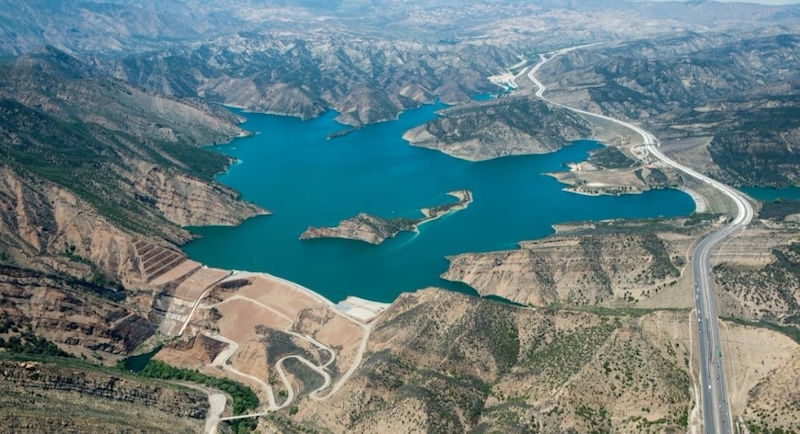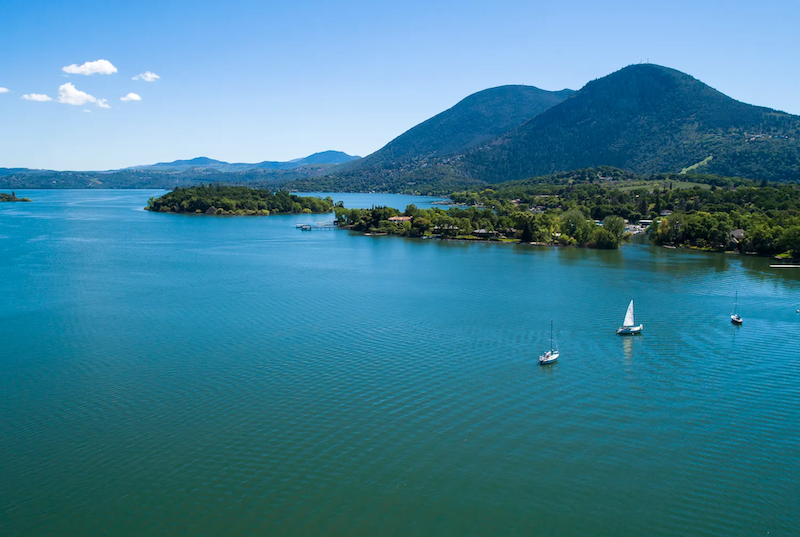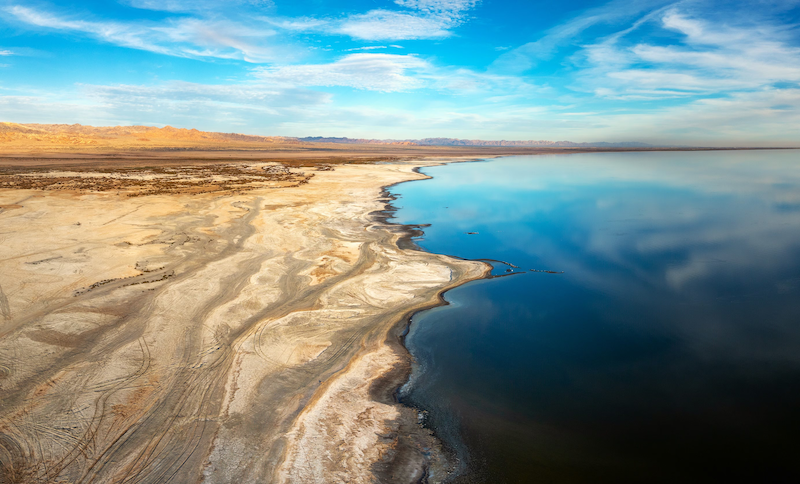
Exploring the Salton Sea: a mindful traveler's guide to California's surreal landscape
There's something unexpectedly captivating about the Salton Sea—a place where beauty and decay dance together across California's desert landscape. I first visited on a whim during a road trip years ago, and found myself drawn back repeatedly, each time discovering new layers to this complicated, hauntingly beautiful place.
Key takeaways
The Salton Sea is California's largest lake, formed by an accidental Colorado River flood in 1905, now facing ecological challenges from increasing salinity and agricultural runoff.
Spring (March-May) and fall (September-November) offer the most comfortable temperatures for visiting, with spring bringing wildflower blooms and fall providing quieter exploration with warm golden light.
The area's unique attractions include surreal landscapes perfect for photography, critical habitat for migratory birds, and cultural sites like Salvation Mountain and the artistic community of Bombay Beach.
-
When visiting, bring plenty of water, sun protection, and proper footwear to explore the diverse shoreline environments, from the wildlife-rich Sonny Bono National Wildlife Refuge to the hauntingly beautiful abandoned structures along the western shore.
Where is the Salton Sea?
The Salton Sea is a large, shallow, saline lake located in Southern California. Understanding its location and surroundings is crucial for planning a visit and appreciating its unique environment.
Location and surroundings
The Salton Sea sits in the Imperial and Coachella Valleys, about 150 miles southeast of Los Angeles and 40 miles north of the Mexican border. It's California's largest lake, stretching 35 miles long and 15 miles wide, with an average depth of 30 feet. The lake is cradled by the Colorado Desert (part of the broader Sonoran Desert), surrounded by agricultural lands, desert ecosystems, and not far from Palm Springs and Indio.
What makes the Salton Sea's location fascinating is its position on the San Andreas Fault, which shapes the region's dynamic landscape. The lake rests in the Salton Sink, a depression that has naturally filled and dried throughout history. Look east and you'll see the Chocolate Mountains; gaze west to find the Santa Rosa Mountains—both creating dramatic backdrops against the lake's flat expanse.
Access tips and notable nearby areas
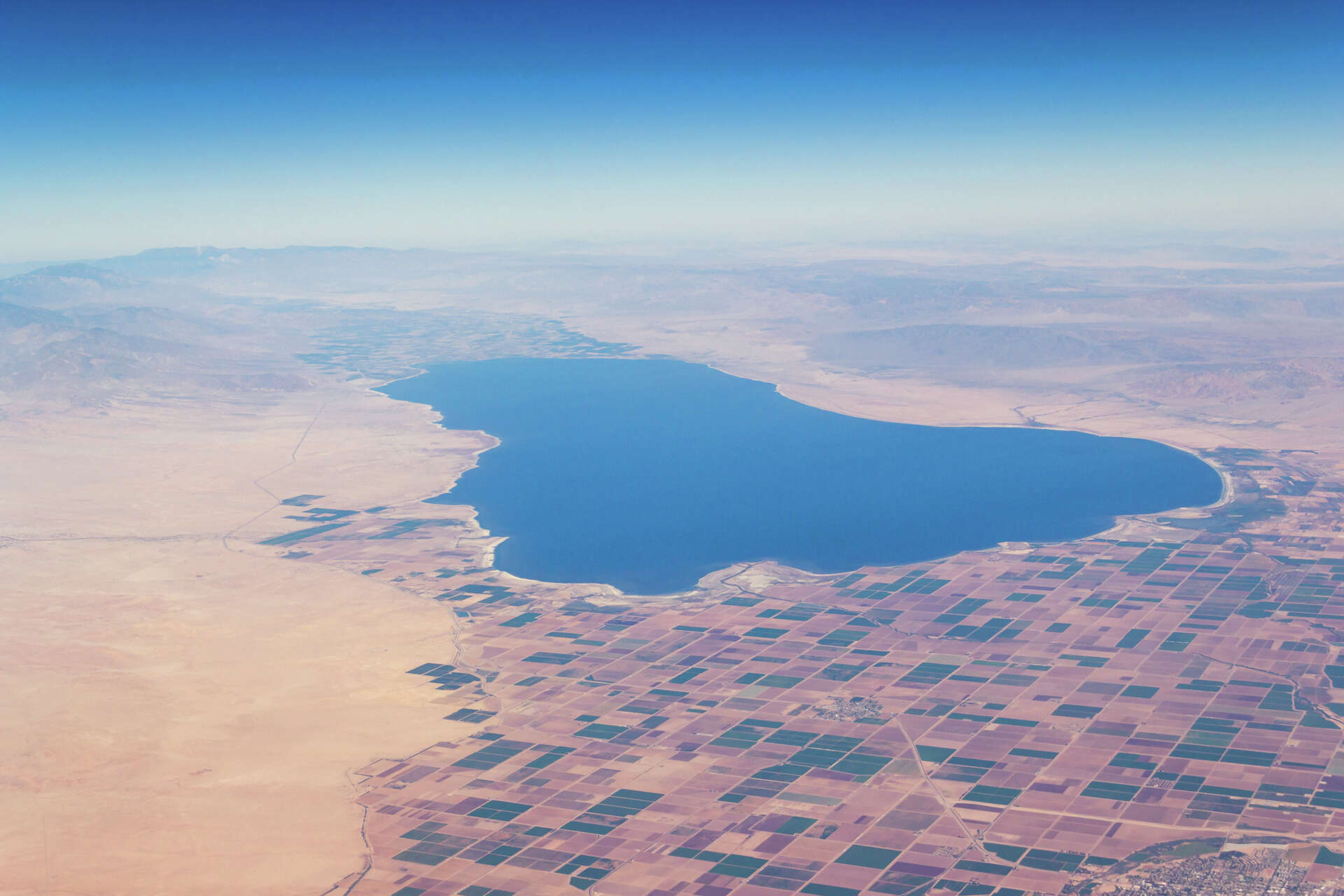
Getting to the Salton Sea takes some planning—parts of the area are remote and navigation can be tricky. Here's what you should know:
-
Best entry points: Most visitors enter through the Salton Sea State Recreation Area on the northeastern shore or the Sonny Bono Salton Sea National Wildlife Refuge on the southern end. Both offer camping, picnicking, and prime spots for birdwatching.
-
Road conditions: Be ready for variable road quality. Many areas around the lake feature unpaved or rough roads. For exploring more remote sections, bring a vehicle with decent clearance—four-wheel drive helps in some spots.
-
Nearby attractions: While in the area, consider these nearby destinations:
-
Salvation Mountain: A vibrant, handmade art installation created by Leonard Knight near Niland, CA.
-
Slab City: An off-grid community that attracts RVers and free spirits, known for its independent spirit and outdoor art.
-
Anza-Borrego Desert State Park: A sprawling desert park with hiking trails, camping areas, and beautiful Colorado Desert scenery.
-
Joshua Tree National Park: About an hour north, this iconic park features distinctive rock formations, Joshua trees, and numerous hiking options.
-
A brief history
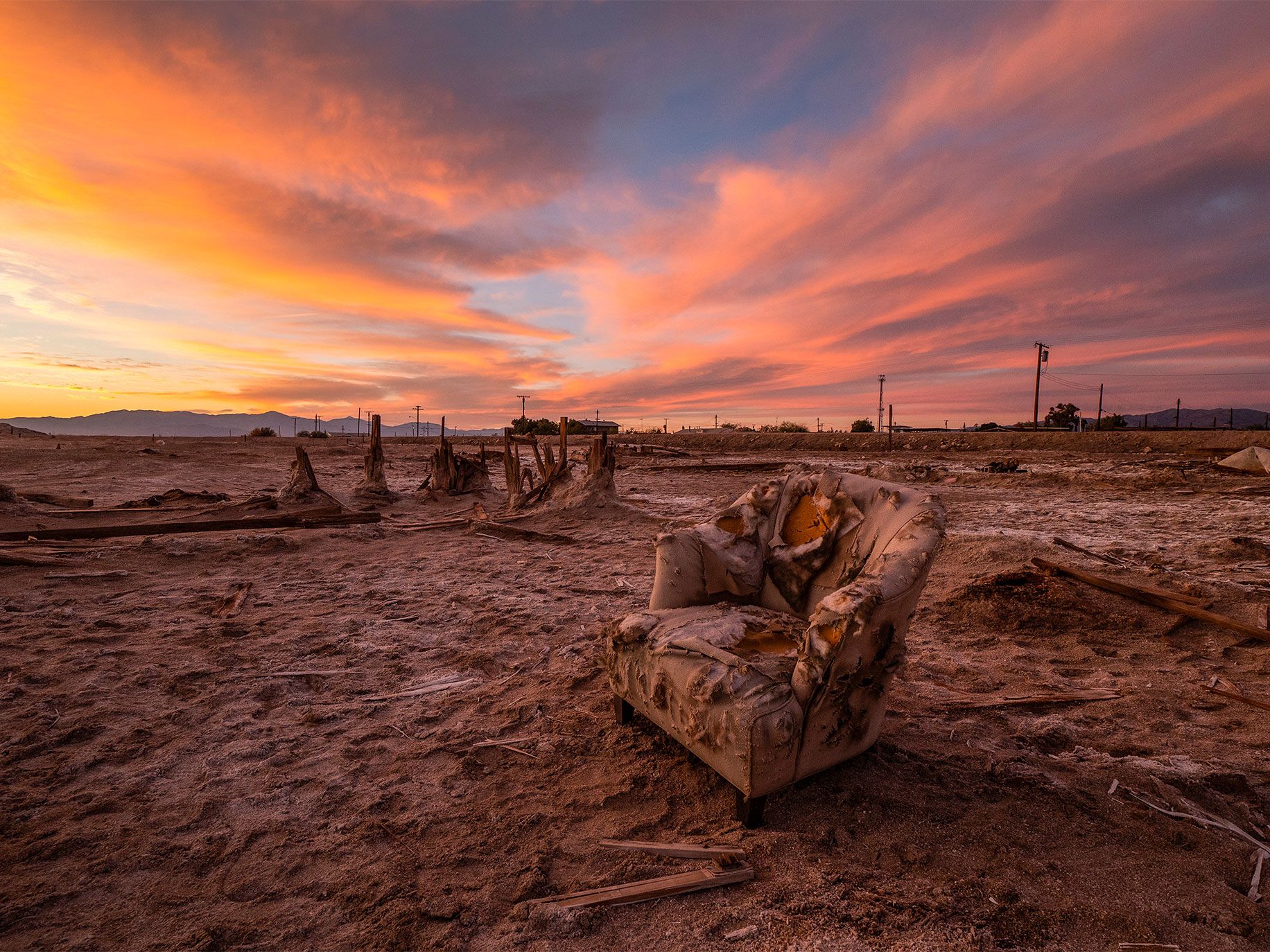
The Salton Sea's journey is a tale of accidental creation, ecological shifts, and ongoing environmental challenges. Understanding its past helps appreciate its present state and the efforts to preserve it.
The ecological story and its impact
The Salton Sea was born by chance in the early 20th century. In 1905, heavy rainfall and snowmelt caused the Colorado River to break through an irrigation canal, sending water rushing into the Salton Sink—a low-lying basin in the Imperial Valley. This unplanned flooding created what we now know as the Salton Sea, which evolved into a crucial habitat for countless species.
The lake quickly became a vital rest stop for migratory birds traveling the Pacific Flyway. Its wetlands and surrounding areas supported an impressive range of wildlife, from waterfowl and shorebirds to fish like tilapia. But the lake's ecosystem has struggled with twin threats: steadily increasing salinity and agricultural runoff. As salt levels have climbed over the years, many fish and bird populations have declined. Meanwhile, agricultural runoff loaded with fertilizers and pesticides has triggered algal blooms and degraded water quality, putting additional stress on the ecosystem.
Rise, decline, and the current state of the Salton Sea
During the 1950s and 60s, the Salton Sea thrived as a popular getaway spot. Visitors flocked to its shores for boating, fishing, and water sports. Resorts and small communities popped up around the water's edge, and the area was celebrated as a "miracle in the desert."
This golden era didn't last. By the 1970s and 80s, the combination of rising salt levels, pollution, and several environmental disasters drove tourists away. Resorts and businesses shut down, leaving behind empty buildings and a sense of abandonment. The once-buzzing communities around the Salton Sea faced both economic hardship and a deteriorating environment.
Today, the Salton Sea faces an ecological crisis. As the lake continues to shrink and become saltier, its ecosystem hangs in the balance. Conservation work is happening, though the challenges are complex. Organizations like the California Department of Fish and Wildlife (CDFW) and local environmental groups are tackling restoration projects, keeping tabs on water quality, and working to control the dust storms.
Why visit the Salton Sea?
The Salton Sea offers a blend of natural beauty, surreal landscapes, and unique opportunities for exploration. Whether you're a nature enthusiast, a photographer, or a birdwatcher, this destination has something special to offer.
Natural beauty and surreal landscapes
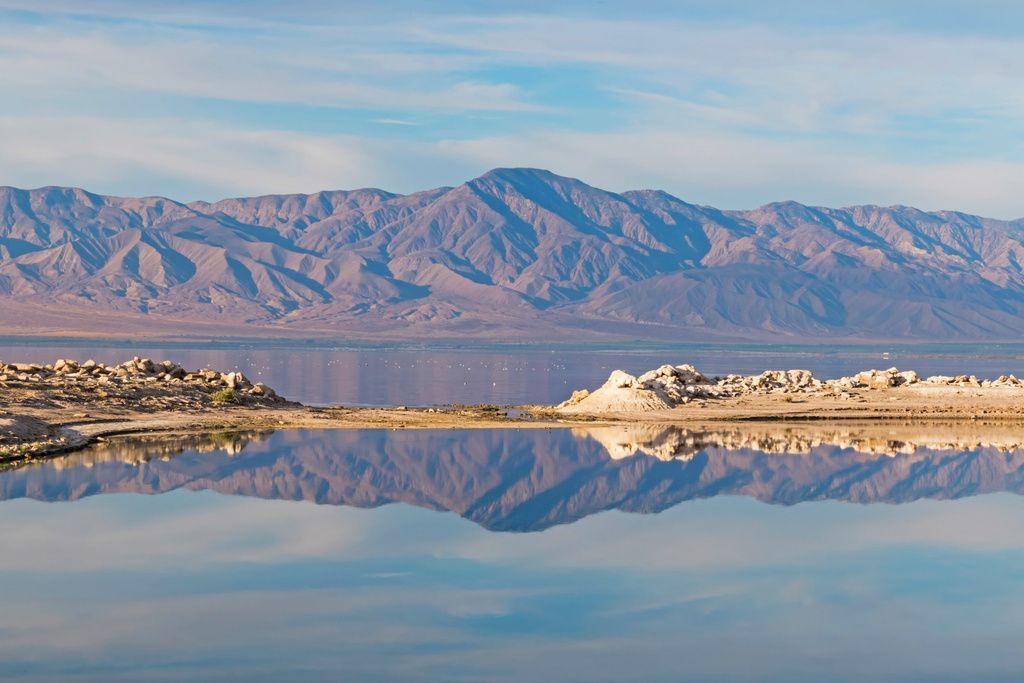
The Salton Sea's unique landscape is a mix of stark beauty and otherworldly charm. The lake's vast, shimmering surface contrasts sharply with the surrounding desert, creating a surreal and almost dreamlike atmosphere. The changing colors of the water, from deep blues to eerie greens, add to the mystique. This unusual setting draws photographers and artists seeking something beyond the typical California landscape.
One of the most striking features of the Salton Sea is its shoreline, which is often lined with eerie remnants of past developments. Abandoned buildings, old piers, and even the skeletons of fish create a hauntingly beautiful scene. These elements tell stories of the area's complex history, making it a fascinating place to wander and wonder.
The surrounding desert adds another dimension to the experience. The stark contrast between the barren land and the expansive lake creates a sense of isolation and tranquility. Desert flora and fauna, including unique plants and wildlife, add to the ecological richness of the area.
Photography and birdwatching opportunities
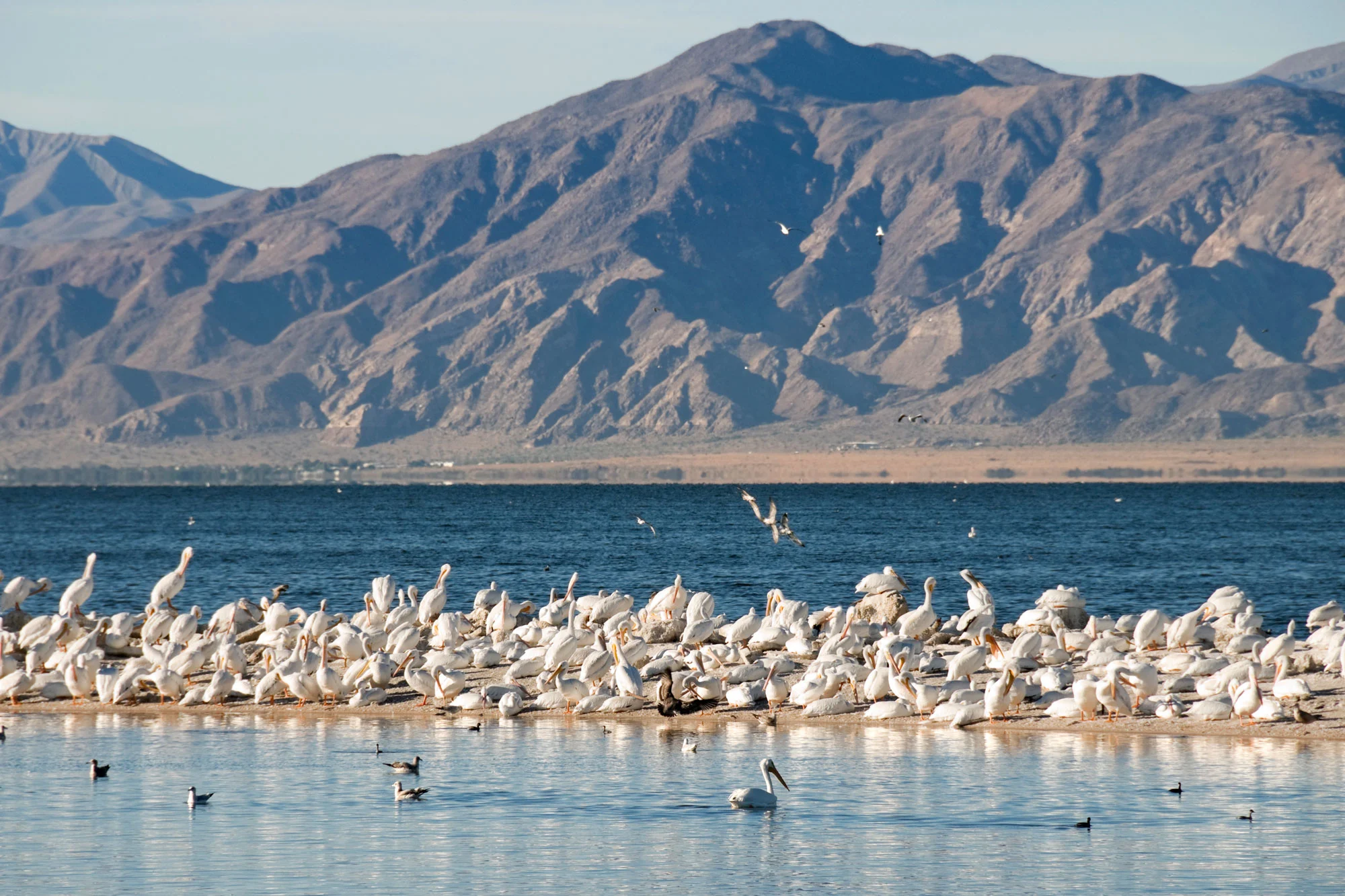
The Salton Sea is a paradise for photographers and birdwatchers. The unique light and colors of the landscape provide endless opportunities for capturing stunning images. Morning and evening bring dramatic light that transforms the landscape—whether you're shooting wide vistas, wildlife, or the haunting beauty of abandoned structures.
For birdwatchers, the Salton Sea is a critical stopover along the Pacific Flyway, making it a hotspot for migratory birds. The lake and its surrounding wetlands support a diverse range of species, including waterfowl, shorebirds, and various other bird species. The Sonny Bono Salton Sea National Wildlife Refuge is particularly popular for birdwatching, with trails and observation points where you can spot countless birds in their natural habitat.
Spring and fall migrations bring thousands of birds through the area, creating spectacular viewing opportunities. Even outside these peak times, the Salton Sea hosts many resident bird species, making it worth visiting year-round for bird enthusiasts.
Visiting the Salton Sea offers a chance to connect with nature in a raw and meaningful way. By exploring mindfully and respecting this delicate ecosystem, we can help preserve the Salton Sea for future generations while experiencing a landscape unlike any other in California.
Things to do
The Salton Sea offers a variety of activities that cater to different interests, from exploring the lake's hidden corners to appreciating local art and history. Here's a guide to help you make the most of your visit.
Exploring the lake's hidden corners
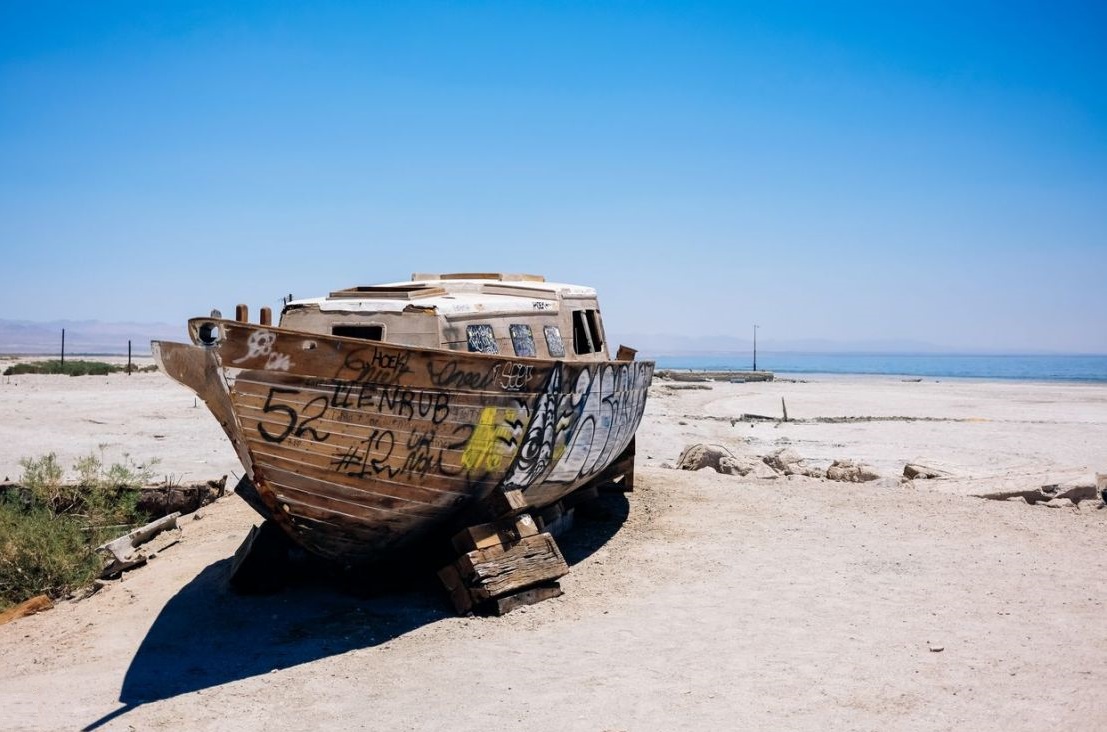
The Salton Sea's vast and diverse landscape invites exploration. Here are some key areas to discover:
The west shore is one of the most striking areas, featuring abandoned buildings, old piers, and even the skeletons of fish. This side of the lake offers a hauntingly beautiful scene, perfect for photography and quiet reflection. The contrast between the desert and the lake creates a surreal atmosphere that is unique to the Salton Sea.
The Salton Sea State Recreation Area on the northeastern shore is a popular spot for camping, picnicking, and birdwatching. This area provides easy access to the lake and offers facilities for visitors, making it a convenient base for exploring the surrounding region. The recreation area is also a good place to learn about the lake's history and ecological significance through interpretive signs and exhibits.
The Sonny Bono Salton Sea National Wildlife Refuge on the southern end is a must-visit for nature lovers. The refuge protects vital habitats for migratory birds and other wildlife. Visitors can explore trails, observation points, and educational programs that highlight the importance of the Salton Sea as a stopover along the Pacific Flyway. The refuge is an excellent place for birdwatching, especially during the spring and fall migrations.
Art and history: Salvation Mountain and Bombay Beach
The Salton Sea is not just about natural beauty; it also offers unique cultural and historical experiences. Two notable attractions are Salvation Mountain and Bombay Beach.
Salvation Mountain is a colorful and unique art installation created by Leonard Knight. Located near Niland, CA, this vibrant hillside is covered in religious messages and folk art, making it a popular spot for visitors seeking something out of the ordinary. The mountain stands as a testament to one person's vision and creativity, becoming an iconic symbol of the Salton Sea region.
Bombay Beach is a small community on the eastern shore of the Salton Sea. Once a thriving resort town, Bombay Beach has weathered its share of ups and downs. Today, it's known for its eclectic art scene and the annual Bombay Beach Biennale, an art festival that transforms the town into a creative hub. Visitors can wander among art installations, murals, and other creative expressions that capture the unique character of the Salton Sea.
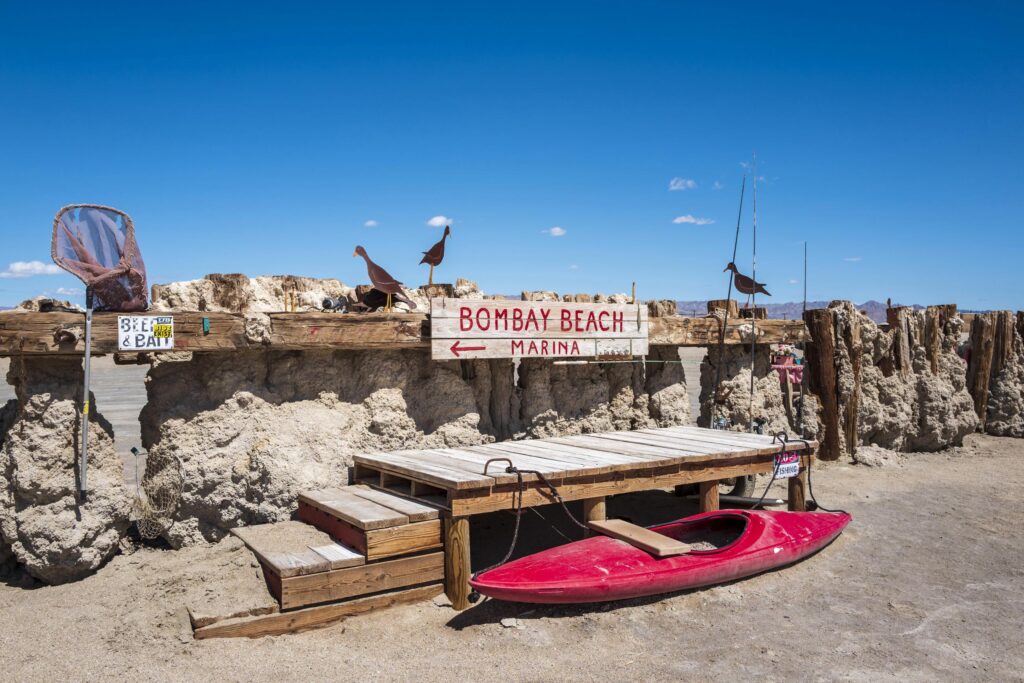
Wildlife spotting and quiet observation
The Salton Sea is a haven for wildlife, particularly birds. The lake's wetlands and surrounding habitats support a diverse range of species, making it an ideal place for wildlife spotting and quiet observation.
The Sonny Bono Salton Sea National Wildlife Refuge is one of the best places for wildlife spotting. The refuge is home to a variety of bird species, including waterfowl, shorebirds, and migratory birds. Visitors can explore trails and observation points, providing ample opportunities to see and photograph birds in their natural habitat. The refuge also offers educational programs and guided tours, enriching the learning experience for visitors.
The Salton Sea State Recreation Area is another excellent spot for wildlife observation. This area provides access to the lake and its surrounding habitats, where visitors can see a variety of wildlife, including birds, fish, and other aquatic species. The recreation area also offers camping and picnicking facilities, allowing visitors to spend more time in nature and observe wildlife at their own pace.
For those interested in a more immersive experience, consider joining a guided tour or participating in a wildlife workshop. These activities provide in-depth knowledge about the Salton Sea's ecosystem and the challenges it faces, fostering a deeper appreciation for the lake's natural beauty and ecological importance.
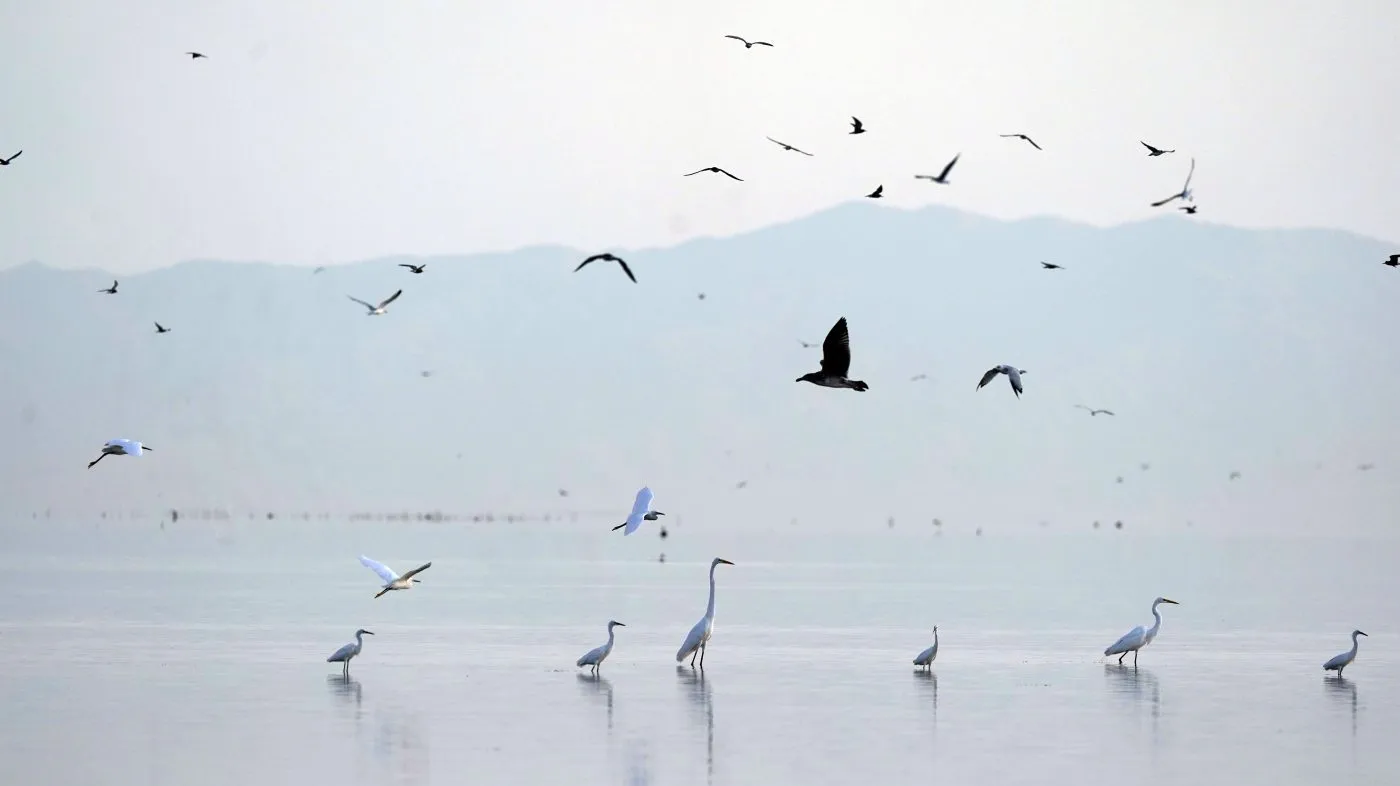
When to visit
Timing your visit to the Salton Sea makes all the difference in what you'll experience. The right season can transform your adventure from merely interesting to truly magical.
Best seasons for exploring
Spring and fall offer the sweet spots for exploring this unusual California landscape, with comfortable temperatures that let you focus on the surroundings rather than battling extreme weather.
Spring (March to May) brings the Salton Sea to life. Birds fill the sky during migration, and temperatures hover comfortably between the mid-60s and low 80s°F (18-27°C). The desert blooms with wildflowers, creating striking contrast against the stark shoreline. This is prime time for wildlife photographers and birders.
Fall (September to November) mirrors spring's pleasant temperatures but with fewer visitors. You'll have more space to yourself as you watch returning migratory birds. The quality of light during fall mornings creates perfect conditions for photography, with softer shadows and warm golden tones across the landscape.
Summer (June to August) tests your heat tolerance, regularly pushing past 100°F (38°C). While most visitors avoid these months, summer offers something unique: the strange, shimmering heat waves rising from the water create a surreal, almost otherworldly atmosphere. If you're drawn to unusual natural phenomena and extreme landscapes, bring twice as much water as you think you need and plan activities for early morning or evening.
Winter (December to February) brings cooler days (mid-50s to low 70s°F/13-21°C) and the clearest skies of the year. The quieter winter months reward photographers with dramatic cloud formations and crisper views of the surrounding mountains. Some facilities reduce hours during winter, so check ahead before counting on specific amenities.
Frequently Asked Questions
What caused the Salton Sea to become toxic?
The Salton Sea's toxicity stems mainly from increasing salinity and agricultural runoff. Years of evaporation and limited freshwater inflow have made the lake increasingly salty. Meanwhile, runoff from nearby farms has brought fertilizers, pesticides, and other pollutants into the water, triggering algal blooms and degrading water quality. These combined factors have decimated fish populations, threatened birds, and created concerning air quality issues as dust storms carry toxic particles from the exposed lakebed.
Why did the Salton Sea go bad?
The Salton Sea's decline results from a perfect storm of environmental challenges. Rising salinity has made the water increasingly hostile to wildlife. Farm runoff loaded with chemicals has fueled harmful algal blooms. As the shoreline recedes, it exposes lakebed sediments that become airborne during windstorms, carrying toxic particles to surrounding communities. These environmental issues have led to dwindling tourism and economic struggles for nearby towns that once thrived along its shores.
What makes the Salton Sea worth experiencing?
The Salton Sea offers something you won't find anywhere else—a place where beauty and decay create a strangely moving landscape. The vast, shimmering water against desert mountains creates stunning sunrises and sunsets. For wildlife enthusiasts, it remains a crucial stopover for hundreds of bird species along the Pacific Flyway. The surrounding area's unique cultural spots—like the colorful folk art of Salvation Mountain and the post-apocalyptic charm of Bombay Beach—add fascinating dimensions to your visit. Coming here means witnessing both environmental challenges and natural resilience firsthand.
Are there any fish left in the Salton Sea?
Fish populations in the Salton Sea have crashed in recent decades. While some hardy tilapia still manage to survive in the increasingly harsh conditions, most other fish species have disappeared entirely. The combination of extreme salinity (now saltier than the ocean) and agricultural pollutants has created an environment where few aquatic species can thrive. Conservation projects continue to address these challenges, but the ecosystem faces an uphill battle.
